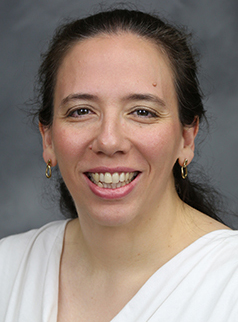By Heather Jennings, PE

The way we talk about COD has changed over time as well. As science and operators have become more sophisticated at evaluating COD fractions, we’ve discovered root causes for issues that have plagued operators for many years. Now, when we talk about CODs it’s more about the COD fractions, volatile fatty acids (VFAs), particulate COD, and whether the COD is biodegradable when we try to model, create computer simulations, or find root causes of wastewater treatment system issues.
Total COD (TCOD) is broken down into two different COD groups: biodegradable and nonbiodegradable. Let’s cover the biodegradable first. Biodegradable can be further broken down into two fractions, readily biodegradable (soluble) COD (rbCOD) and slowly biodegradable particulated COD (sbCOD). Complexes of alcohols, amino acids, simple sugars and VFAs make up rbCOD, whereas sbCOD is made up of proteins, fats oils and grease (FOG), complex carbohydrates, etc. rbCOD has the advantage of being able to be readily absorbed through cell membranes, whereas sbCOD must be adsorbed, broken down with extracellular enzymes, or hydrolyzed and then absorbed. For this reason, rbCOD is the preferred carbon source in wastewater treatment.
rbCOD concentration can have a significant impact on phosphorus removal and the nitrification-denitrification cycle, as both processes occur at a higher rate with rbCOD. This can be advantageous, as these processes can then require smaller anoxic or anaerobic tank sizes to complete both processes. Too much rbCOD can create issues if coupled with a high food–to–mass ratio, resulting in bulking and filamentous issues. Plug flow aeration is also impacted by high rbCOD concentrations, as it requires a higher oxygen demand toward the front of the aeration basin compared with the end of the aeration basin. Another condition to discuss is when aeration is limited or “maxed out”: a high rbCOD uptake rate can cause dissolved oxygen to drop dramatically and inadvertently create anoxic zones that can lead to poor overall COD treatment.
High levels of sbCOD can also lead to operational issues, especially when there is poor COD uptake due to a slug of FOG, etc., that can lead to filamentous issues or stimulate nitrification in areas where it’s not wanted. If there is a low hydraulic retention rate with high levels of sbCOD, you could also develop poor COD treatment conditions.
Nonbiodegradable COD can be broken down into soluble (nbsCOD) and particulate (nbpCOD) fractions, and neither fraction contributes to microbial treatment of wastewater. nbsCOD leaves biological treatment in the effluent and impacts the TCOD in the effluent, on which permits are based. I have had industrial customers who have successfully reduced the TCOD in their effluent, only to struggle with the last 15% needed to meet their permit due to the high percentage of nbsCOD. The treatment struggle can be very real with nbsCOD.
nbpCOD is the portion of COD that contributes significantly to solids in primary clarification and waste activated sludge. nbpCOD can also contribute to higher TCOD when there are settling issues within the wastewater treatment system. It reduces the digestibility of the wasted sludge because it is not biodegradable.
As a wastewater industry, we’ve come a long way in evaluating and understanding the different fractions of total COD! Hopefully, understanding it will assist us in better understanding treatment issues and help the industry as a whole to find better solutions for them.
Related Posts

This Week in Ag #27
Just as the seasons inevitably turn, so does the farming landscape within a tight-knit rural community. That reality hit close to home for me last Thursday with the passing of my uncle, Gary Nichols. He and my father farmed together for decades, and like most farming families, Uncle Gary was a solid fixture in my life,...

Micronutrients Are the Key to Better Yields
Micronutrients play a critical role in plant vigor, yield, and harvest quality. Yet, they are often overlooked when growers develop their nutrient programs. In this article, we provide an overview of what micronutrients are, the roles they play, how availability is affected by soil and other conditions, how to recognize deficiencies, and the important steps to take when developing a micronutrient plan for your crops.

Celebrating the Life of Jason Garcia
We lost Jason Garcia this week, his life cut short way too soon. When Jason joined BHN as an agronomist in 2019, it was apparent early on that we had hired a special guy. Jason was ENTHUSIASTIC! Always. You just couldn’t have a conversation with Jason without hearing a great story about someone in his...

